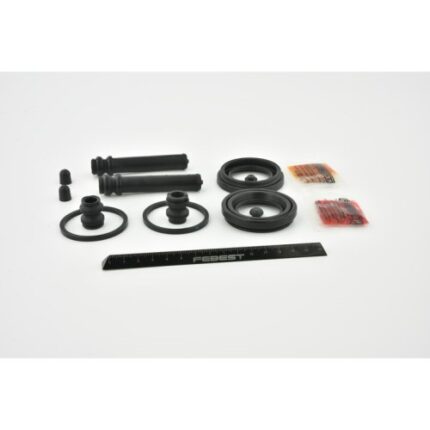-17%
Get Honda CR-V RE7/RM4/RE4 Front Shock Boot
The shock boot, also known as the shock absorber boot or dust cover, is a protective component that encases the shock absorber or strut assembly. It serves several important functions in maintaining the integrity and performance of the suspension system. Here’s a deep dive into the definition and functions of a shock boot:
1. Protection Against Contaminants:
- Dust and Debris: The primary purpose of the shock boot is to shield the shock absorber or strut from dust, dirt, sand, and other debris encountered during vehicle operation. These contaminants can cause premature wear and damage to the internal components of the shock absorber, leading to reduced performance and potential failure.
- Moisture and Water: The shock boot also helps prevent moisture and water from infiltrating the shock absorber, which can lead to corrosion and deterioration of the internal seals, piston, and other components. This is particularly important for maintaining the longevity and effectiveness of the shock absorber in various weather conditions.
2. Prevention of Seal Damage:
- The shock boot provides an additional layer of protection for the seals and piston rod of the shock absorber, shielding them from exposure to harsh environmental elements and abrasive particles. By minimizing direct contact with contaminants, the shock boot helps prevent seal damage and fluid leakage, ensuring optimal shock absorber performance and longevity.
3. Extended Service Life:
- By effectively guarding the shock absorber or strut against external hazards and preserving its internal components, the shock boot contributes to the extended service life of the suspension system. It helps maintain consistent damping characteristics and ensures reliable performance over time, reducing the frequency of suspension maintenance and replacement intervals.
4. Enhanced Performance and Comfort:
- A well-maintained shock boot helps preserve the functionality and effectiveness of the shock absorber or strut, allowing it to operate smoothly and efficiently. By preventing contamination and seal damage, the shock boot helps maintain consistent damping forces and suspension compliance, resulting in improved ride comfort, stability, and vehicle handling.
5. Visual Inspection and Maintenance:
- The shock boot also facilitates visual inspection of the shock absorber or strut assembly, allowing for early detection of any signs of wear, damage, or fluid leakage. Regular inspection and maintenance of the shock boot can help identify potential issues and prevent more extensive damage to the suspension system.
Signs a car needs a new one;
1. Visible Damage or Wear:
- Tears or Holes: Inspect the shock boot for any tears, holes, or punctures. Damage to the boot allows dirt, debris, and moisture to enter the shock absorber, leading to accelerated wear and potential damage.
- Cracking or Deterioration: Look for signs of cracking, dry rot, or deterioration in the material of the shock boot. These issues weaken the boot’s ability to provide effective protection and may indicate the need for replacement.
2. Leakage or Fluid Loss:
- Oil Leaks: Check for signs of oil leaks or fluid seepage around the shock absorber. A damaged shock boot can allow shock fluid to escape, resulting in decreased damping performance and potential damage to internal components.
- Loss of Shock Fluid: If the shock absorber appears to be low on fluid or shows signs of internal corrosion, it may be due to a compromised shock boot allowing fluid loss.
3. Excessive Suspension Noise:
- Rattling or Clunking Noises: Worn or damaged shock boots can lead to increased noise from the suspension system, such as rattling or clunking sounds over bumps or rough roads. This may indicate that debris has entered the shock absorber, affecting its performance.
- Squeaking or Creaking: Dry or deteriorated shock boots can produce squeaking or creaking noises during suspension movement, signaling the need for replacement.
4. Reduced Suspension Performance:
- Increased Bounce or Instability: A vehicle with worn shock boots may experience excessive bouncing, instability, or uneven tire wear. This occurs as the compromised shock absorber struggles to dampen vibrations and maintain control over the vehicle.
- Poor Handling: Deteriorated shock boots can lead to diminished handling and stability, particularly during cornering or sudden maneuvers, as the shock absorbers lose their ability to effectively control suspension movement.
5. Corrosion and Rust:
- Visible Corrosion: Inspect the shock absorber for signs of rust or corrosion, particularly around the piston rod. Moisture ingress caused by a damaged shock boot can accelerate corrosion, compromising the structural integrity of the shock absorber.
Follow us on Facebook for more parts.



